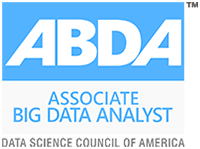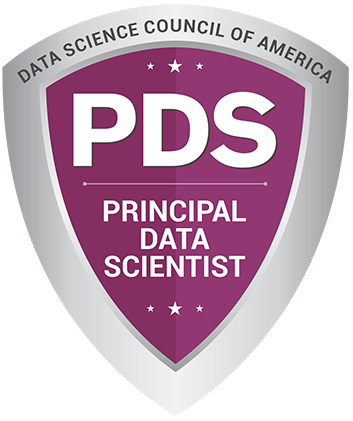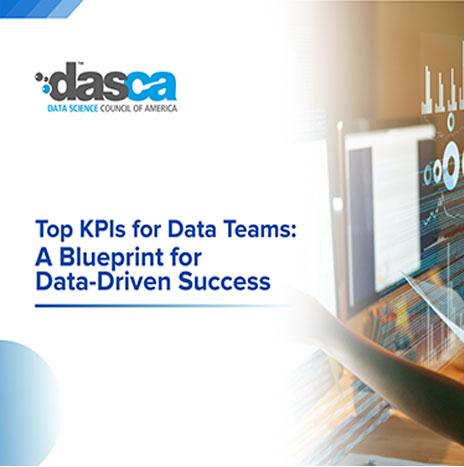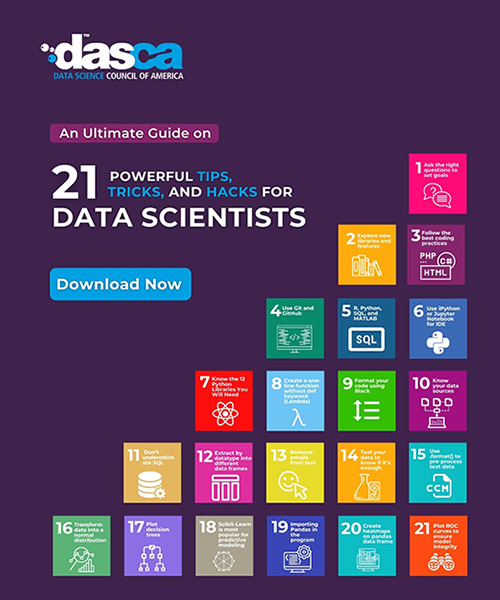
Bayesian statistics has become the most popular approach for inference-making in current data science due to its rigor in dealing with uncertainties. By utilizing outcomes from prior beliefs while learning from new data, Bayesian inference has been widely accepted as a method for solving complex data problems. This differs from classical approaches, as it applies a probabilistic view of the world that enhances predictive power, flexibility, and versatility across various industries. The future importance of Bayesian statistics lies in its ability to describe uncertainty and develop knowledge effectively.
Foundations of Bayesian Statistics: A Modern Perspective
The statistics of the course in Bayesian statistics can shift from fixed parameters to probability distributions that may change as data is updated. In contrast to frequentist approaches in which probability refers to the classical notion of relative frequency of events, Bayesian statistics qualify probability as the degree of belief, which can be revised based on the data obtained.
The primary concept is derived from Bayes 'Theorem, which presents a probability model that updates prior beliefs with observation. This makes it highly flexible in volatile data settings, as it can handle large datasets. The formula is structured as:
Posterior = (Likelihood × Prior) / Evidence
For better comprehension of this framework, the following subheads will offer the simplification of its key features:
- Prior Distribution: Refers to the expectations of a specific condition that exist before the receipt of the current information. It is instrumental in determining the shape of the posterior, especially where the data is scarce.
- Likelihood function: The density of possibilities of the observed data at a set of specific parameters. It measures the model's accuracy in its given dataset.
- Posterior Distribution: It is the distribution of belief about the parameter after the prior and likelihood have been incorporated. This helps in decision-making and forecasting of events in the distribution.
- Evidence: Also referred to as the marginal likelihood, it scales the posterior distribution appropriately but can be considered a constant during inference.
The Growing Role of Bayesian Statistics in Shaping Modern Data Science
Bayesian thinking has been a revolutionary technique for data extraction, owing to its capability to analyze figures and information. In contrast to deterministic models, which employ a deterministic approach that involves quantifying certainty, Bayesian inference can be seen as a significant strength in making highly accurate decisions. It is most useful with dynamic systems because it is a powerful means of adapting the model to the newly gained information.
Primary Roles of Bayesian Statistics in Present-Day Data Science:
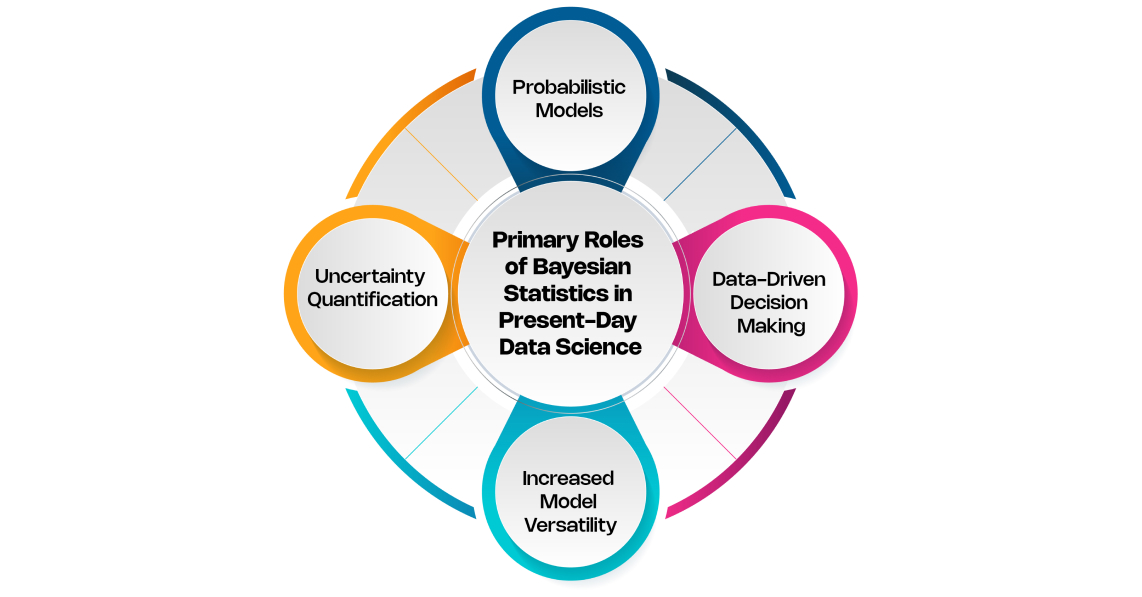
- Probabilistic Models: Bayesian statistics is a technique that gives more focus on distributions rather than point estimates.
- Data-Driven Decision Making: By incorporating prior knowledge and updating predictions, Bayesian inference enables businesses to make informed decisions, even in the presence of incomplete or noisy data.
- Increased Model Versatility: It provides a more convenient way to model nonlinear relationships and diverse phenomena, which are typical of fields such as medicine and finance
- Uncertainty Quantification: Bayesian statistics allow not only for a point estimate, but also for estimating the uncertainty of the forecast, which is particularly important in fields such as actuarial science and financial planning.
Applications of Bayesian Statistics in Modern Data Science
Bayesian statistics allow data scientists to make efficient predictions when formulating hypotheses, updating knowledge upon receiving new information, and estimating uncertainty levels. It is beneficial when data is scarce, untidy, and dynamic, as it allows for alterations in the model.
In modern intelligent systems, Bayesian approaches enable the updating of prior knowledge and statistics based on new data received. In comparison to deterministic models, which provide point estimates, Bayesian models offer the probability distribution, thereby enhancing decision-making under uncertainty.
Some key applications include:
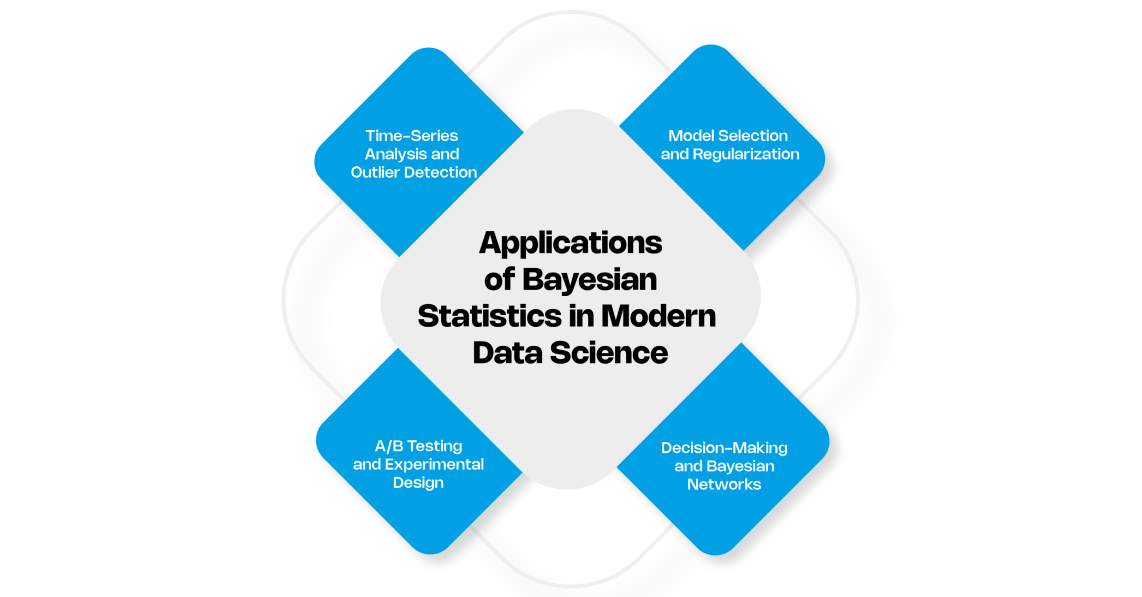
- Model Selection and Regularization: Regularization is straightforward in Bayesian analysis, as it involves integrating parameters directly. Thus, there is no need for fixed-point estimates. This helps reduce the problem of overfitting and facilitates the selection of more generalized models for use in the project.
- Decision-Making and Bayesian Networks: In healthcare and finance, Bayesian networks are utilized to model the dependencies between various factors. These networks provide straightforward and easily explained paths to the effects that different factors have on the system.
- A/B Testing and Experimental Design: There are several benefits to using Bayesian methods in A/B testing; they enable one to monitor the tests without stopping them and still maintain validity. That way, practitioners do not have to wait for fixed sample sizes before making their next move; probabilities are updated as new data arrives.
- Time-Series Analysis and Outlier Detection: Bayesian models learn from new data and are thus well-suited for forecasting, especially in high-variance scenarios, such as energy usage and stock price indices. This enables the identification of the credibility of predictions, allowing for the quantitative flagging of anomalies.
Advantages of Using Bayesian Inference
Bayesian inference has several distinct advantages, as highlighted by the applications and benefits of Bayesian networks. It enables learners to engage in online learning and update their prior knowledge with newly acquired knowledge, making it highly advantageous. This is particularly valuable in an environment where data changes with time.
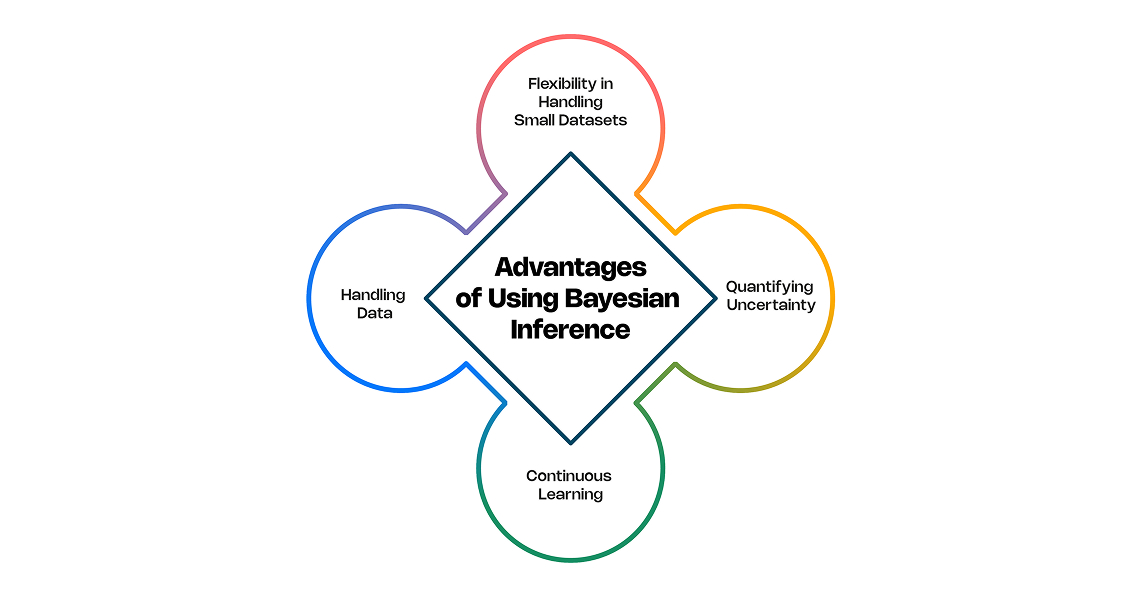
- Flexibility in Handling Small Datasets: Small data sizes do not pose any problems for Bayesian methods, as these allow the use of prior information and, based on it, obtain more accurate estimates than frequentist methods.
- Quantifying Uncertainty: Bayesian inference enables the model to provide an entire range of probabilities for the parameters, rather than a single estimate, along with an appreciation of uncertainty and variation in prediction.
- Continuous Learning: It is possible to update the models as new data is obtained, making Bayesian inference suitable when data is collected successively.
- Handling Missing Data: Bayesian statistics is more developed for handling missing data since it involves the use of probabilities, which makes its estimates more suitable.
Tools and Techniques for Implementing Bayesian Inference in Data Science
Applying Bayesian analysis to data science requires the use of tools and approaches that enable the practical application of probabilistic models. There are several libraries and frameworks designed to facilitate various methodologies used by data scientists for developing and selecting Bayesian models.
Key Tools and Libraries:
- Probabilistic Programming Frameworks: They facilitate the easy definition of both the model and the inference process, thereby handling most of the complexities associated with these tasks. They employ stochastic techniques for Bayesian inference, such as Markov Chain Monte Carlo (MCMC) or variational methods, to enhance computational efficiency.
- Markov Chain Monte Carlo (MCMC): This is an essential process in Bayesian statistics since direct sampling on the posterior distribution is usually impossible. Gibbs sampling is a numerical process used for sampling in complex probabilistic models.
- Variational Inference: Introducing another approximation to deal with the problem of the computational intractability of the posterior distribution for large datasets, known as the variational inference.
- Probabilistic Models: Bayesian networks, a type of graphical model, capture the relationships between variables, making it easier to express the desired conditional probability models.
Implementation Steps:
- Specify the prior distribution based on knowledge of the problem domain.
- Develop the likelihood function that captures the relationship between data and parameters.
- To sample and estimate the posterior distribution, several techniques are available, including Markov Chain Monte Carlo (MCMC) and variational inference.
Future of Bayesian Statistics in Data Science
The future of Bayesian statistics in data science is set for further development as more industries request more reliable, easy-to-interpret, and uncertainty-informed models. As data has become a primary commodity and decisions made based on it are intricately woven into the fabric of business strategy in many organizations, probabilities are now managed and modeled through the Bayesian approach to provide a competitive edge, especially in organizations engaging in high-risk operations.
Major transformation areas as the key factors influencing the future are as follows:
- Automated Bayesian Inference: Expert supervision and manual tuning are no longer necessary for Bayesian models, as better approaches are being designed and developed to automate them.
- Bayesian Deep Learning: A contemporary trend has emerged in combining Bayesian statistics with deep learning models to enhance interpretability and control overfitting.
- Integration with Big Data Ecosystems: The real-world application is the integration with significant data ecosystems. The following steps involve integrating Bayesian statistics into a distributed computing infrastructure, enabling the application of these methods in dynamic environments.
- AI-Driven Industries Adoption: Industries such as healthcare and autonomous systems, along with the financial sector, have already adopted Bayesian statistics to develop more effective, explainable, and adaptive models for informed decision-making.
Conclusion
The Bayesian approach in statistics is a tool that enables the effective and efficient handling of uncertainty. Hence, it has been adopted widely in advancing data science. The effectiveness of leveraging pre-existing knowledge, learning from new information, and measuring prediction risk is among the benefits of statistical reasoning using Bayesian methods for data scientists. The increasing use of the Bayesian approach in various fields demonstrates the flexibility and relevance of the mathematical theorem, which helps solve a range of analytical problems in creating intelligent data solutions.






